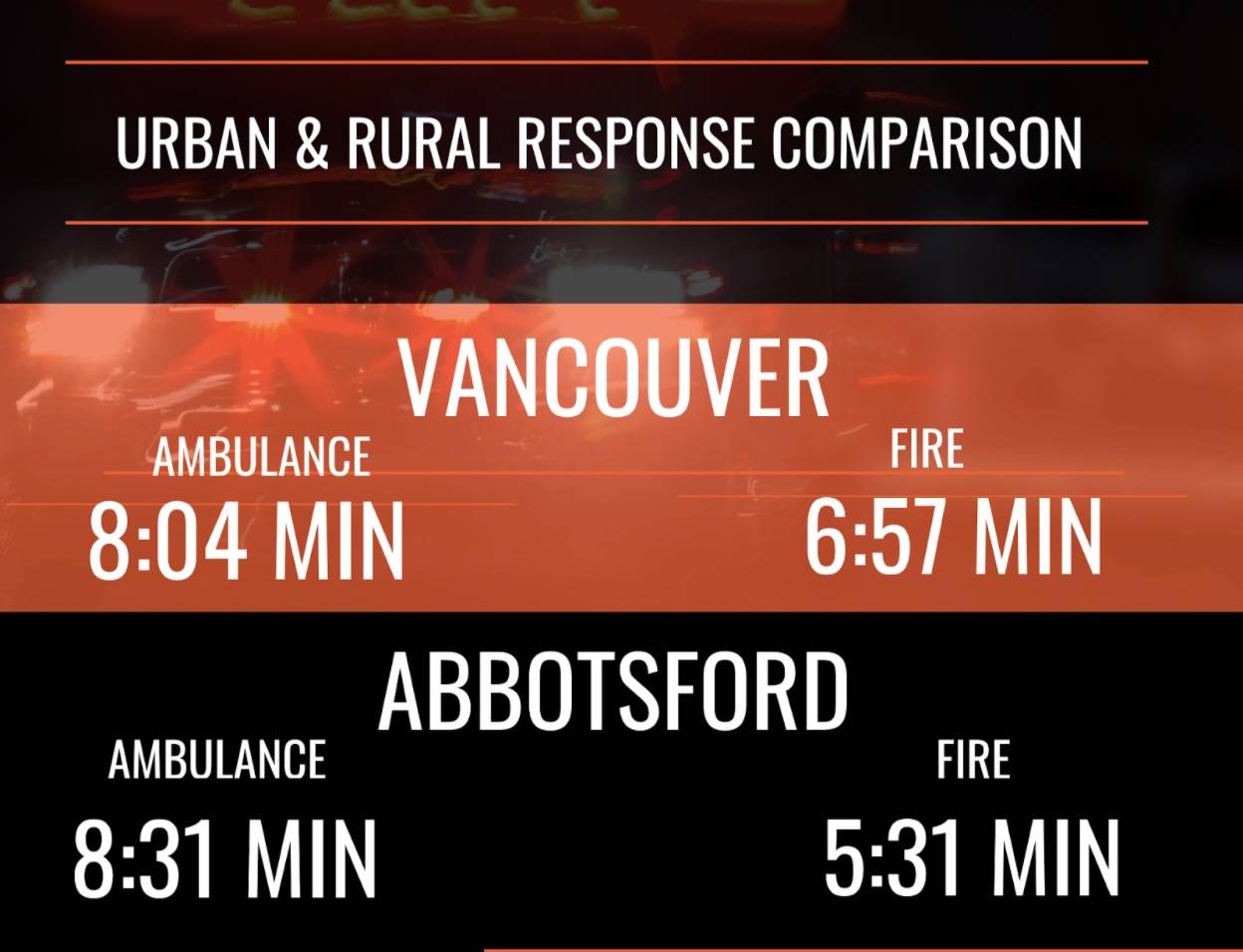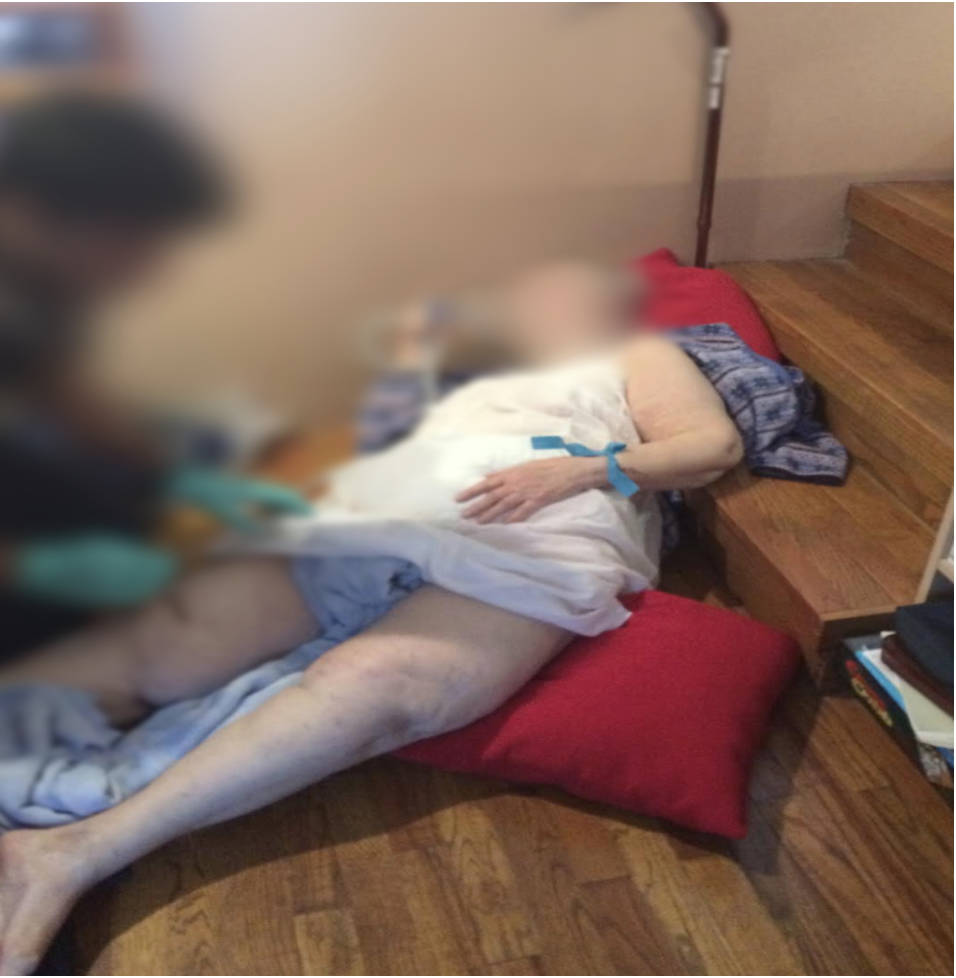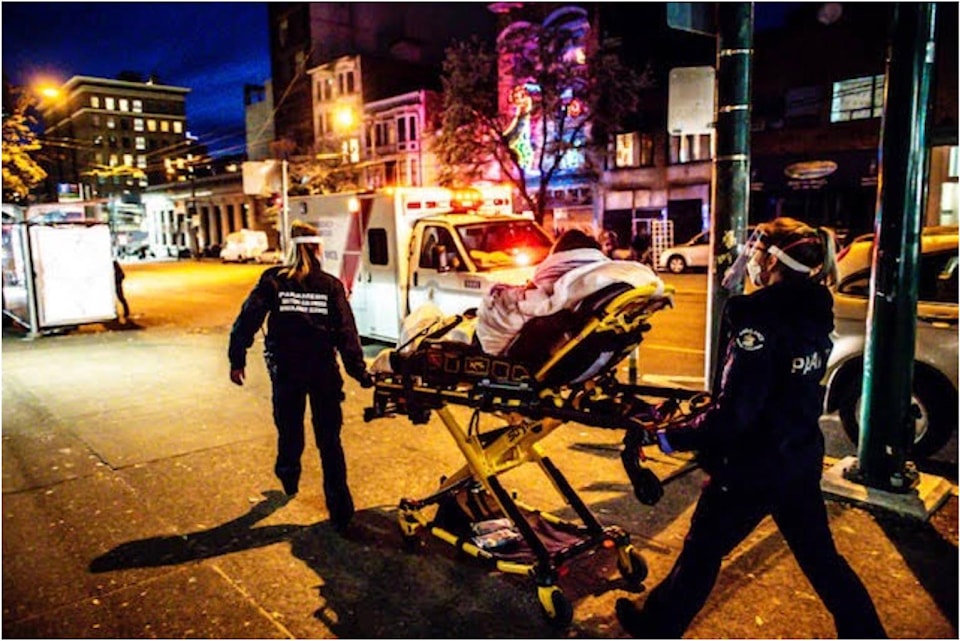By Baneet Braich and Yasmine Ghania for Black Press Media
Margaret Beatch recalls heading down the four wooden stairs from her kitchen to the living room in her Chilliwack home when she suddenly lost her balance and fell. For 35 minutes, the 83-year-old screeched in pain waiting for paramedics to assist with her broken hip.
Margaret’s family still wonders how the situation would have differed if the fire department — eight minutes away — was dispatched.
“The first people who are able to arrive should be able to help first,” says Margaret’s husband, Wilmer Beatch.
“You realize that ambulances are sometimes very very busy, so why can’t the fire department, if they are free, come? They are both public service.”
The B.C. Office of the Auditor General released a 2019 report on access to emergency services which found that British Columbia Emergency Health Services (BC EHS) needs to work more closely with fire departments. Ambulances met their nine-minute target time for the most serious emergencies in urban areas only 50 per cent of the time, according to the report.
READ MORE:
The auditor general said BC EHS can improve patient care by working with local governments to implement a coordinated approach to pre-hospital care.
“The COVID-19 pandemic brought us closer together with our first responder partners to better manage our roles and responsibilities during a large-scale medical emergency. From that coordination we are working cooperatively to continue to improve coordination with fire departments and local municipal governments,” says Neil Lilley, BC EHS senior provincial executive director.

Black Press Media spoke to concerned B.C. residents and firefighters in B.C. cities with multiple fire halls including Abbotsford, Vancouver, Nanaimo and 91ԭ��. All agree Emergency Medical Responder (EMR) training would improve patient care and should be standard across all fire departments in B.C. However, the province and paramedics aren’t on board.
EMR licenses allow firefighters to administer more medical aid to patients in emergency situations. For example, firefighters can give aspirin to patients with cardiac conditions, measure pulse, blood pressure, oxygen and glucose levels and provide other initial emergency care.
Firefighters want to take on more responsibility partly because they outnumber paramedics.
As of 2019, there are 4,000 full-time firefighters and thousands more on-call volunteer firefighters, according to the B.C. Professional Firefighters Association. Meanwhile there are only 2,874 primary care paramedics, 548 emergency medical responders and 341 critical and advanced care paramedics, according to the 2019 auditor general’s report.
However, not all paramedics, emergency medical responders, and critical and advanced care paramedics answer standard ambulance calls.

There’s also a difference between the number of fire and ambulance stations. There are 389 fire departments in B.C., according to the province. Each department operates at least one fire hall in each city, with bigger cities such as Surrey having 25 halls. In contrast, there are 183 ambulance stations in B.C., according to the province website.
ALSO READ:
ALSO READ:
Many calls that fire departments respond to are not fire-related. Over 50 per cent of calls were medical for Abbotsford, Richmond, Burnaby, Nanaimo, Port Moody and Vancouver fire services last year, city officials say.
EMR should be standard training for firefighters, critics say
Vancouver Fire Rescue Services started EMR training in 2019. Capt. Jonathan Gormick, an information officer at VFRS, says EMR helps save time.
“There’s less duplication of effort and less time (paramedics) have to waste doing assessments that we can do so they can provide faster treatment and transport.”
He adds that EMR licenses are useful in emergency situations in which paramedics can’t access patients right away.
Tracey Gundersen died in November 2018 when she profusely bled to death due to ongoing issues with rectal and uterine prolapse. Paramedics couldn’t access her sixth-floor suite in Vancouver due to extra security features and a locked elevator. Firefighters had master keys and were a block away but were only dispatched to the scene after several minutes.
In May 2018, BC EHS implemented a new way of classifying the urgency of medical calls based on a colour code system. Gundersen’s call was tagged code orange which meant only paramedics were dispatched.
Her daughter Chelsea Brent, who’s also a 911 call-taker, believes her mother’s situation would’ve been drastically different if firefighters were dispatched immediately.
“She was obviously losing consciousness in that call, getting weaker and weaker and losing blood to be life-threatening and dying and they didn’t change their response,” Brent says.
Brent believes allowing firefighters to have more medical training would improve patient care.
“I think it should be standard for every firefighter to be trained in EMR,” Brent says. “Cities are still going to pay for a certain amount of firefighters to be in the city. They’re sitting there, they’re in the halls. Utilize them.”
Advocates say B.C. should instead enhance paramedic services
Troy Clifford, president of the Ambulance Paramedics and Emergency Dispatchers of BC (CUPE local 873), disagrees that firefighters should receive EMR licences, arguing that it would increase taxpayer spending.
“That’s not their role. They’re there for the community public safety role and first responders role,” Clifford says. “That’s not efficient and I would question why you would want the taxpayers to pay duplicate. You’re asking them to pay additional costs that aren’t required.”
Clifford suggests municipalities should instead lobby the provincial government to enhance ambulance services in their communities.
Gormick explains firefighters are a “complimentary service” to paramedics.
“We’re not taking jobs away from paramedics. We’re improving patient care. That is it. We’re only here to help and support paramedics,” Gormick says.
Gormick adds that giving firefighters EMR licenses saves fire departments money down the line.
All B.C. firefighters have a First Responder license, which expires every three years, requiring firefighters to complete a recertification course and exam. The fire department has to repeatedly track and pay for licences and arrange recertification courses and testing.
However, an EMR licence is a one-time payment. Firefighters need to book a practical, written and online exam through the province which costs about $400. The license is maintained through training that fire departments provide and submissions of annual required documents to the EMA Licensing Board.
“The initial output is a little bit higher and more cumbersome than getting an FR license but in the long run it’s less expensive and easier to maintain,” Gormick says.
Once firefighters have an EMR license, they no longer have to renew their First Responder licences, saving departments thousands of dollars each year.
Improving coordination with fire departments is a challenge because fire services are funded by local governments, while BC EHS and ambulance services are under provincial jurisdiction. Since 2017 BC EHS’s annual budget has increased by eight per cent to $441 million thanks to an investment from the Ministry of Health.
Fire service funding varies due to city population size and capacity. Vancouver spent $140 million on fire protection meanwhile Abbotsford allocated $19 million, according to city 2019 financial reports.
The Ministry of Health wouldn’t comment on whether they would consider funding or standardizing EMR but said they welcome an “expanded role” for firefighters and first responders in providing emergency care.
“First responders and paramedics must act as one team to protect patient safety,” an emailed statement from the ministry reads.
Gormick believes the services that the provincial government funds gives them a “vested interest” in choosing who responds to emergency situations.
“There’s an odd conflict there. It’s a really sticky situation and I don’t think one that benefits patients,” Gormick says.
Brent also agrees. “It should be patient care over anything but I feel like it comes down to a political nature too often.”
The ministry was asked about this tension but didn’t comment.
Since the Auditor General’s report, BC EHS formed an advisory committee with representatives from the Ministry of Health, Fire Chiefs Association of B.C., Office of the Fire Commissioner, rural fire chiefs and other regional directors, focusing on the report recommendations as well as COVID-19 response.
BC EHS told Black Press Media that a new framework is expected to be introduced this fall which will set new time targets for the province. BC EHS will also work with the Vancouver Fire Department to test out a new real-time data sharing system.
Comparison of fire and ambulance stations:
Vancouver BLUE: Ambulance Stations. ORANGE: Fire Stations.
Nanaimo BLUE: Ambulance Stations. ORANGE: Fire Stations.
Abbotsford BLUE: Ambulance Stations. ORANGE: Fire Stations.
Like us on and follow us on .
Want to support local journalism? Make a donation



